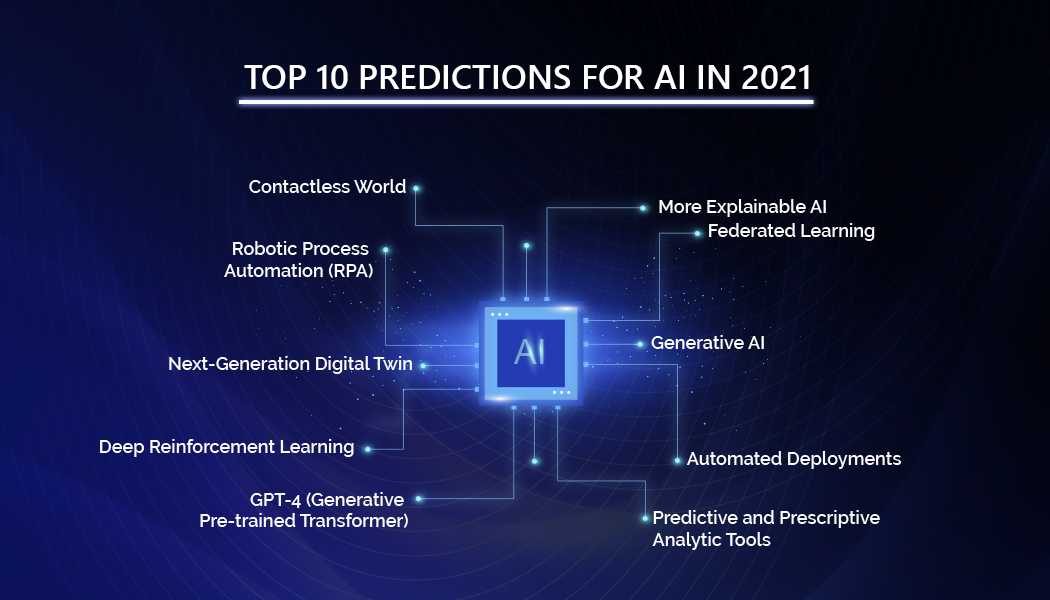The Future of AI Research: Trends and Predictions

AI research is rapidly evolving, and a number of trends are shaping its future. These trends include:

- Increased use of machine learning (ML): ML is a type of AI that allows computers to learn from data without being explicitly programmed. ML is being used in a wide range of applications, from image recognition to natural language processing.
- Greater focus on deep learning: Deep learning is a type of ML that uses artificial neural networks to learn from data. Deep learning has been shown to be very effective for a variety of tasks, including image recognition, natural language processing, and speech recognition.
- Increased use of cloud computing: Cloud computing provides access to a vast amount of computing power, which is essential for training large ML models. Cloud computing is also making it easier for researchers to collaborate on AI projects.
- Greater focus on ethics and safety: As AI becomes more powerful, it is important to ensure that it is used ethically and safely. Researchers are working on a variety of ways to make AI more transparent, accountable, and fair.
- Increased use of AI in the real world: AI is already being used in a variety of ways, from self-driving cars to medical diagnosis. In the future, AI is expected to be used in even more ways, impacting a wide range of industries and aspects of our lives.
Here are some specific predictions for the future of AI research:

- AI will become more autonomous: AI systems will become more able to learn and adapt on their own, without human intervention. This will allow AI systems to be used for a wider range of tasks, and will make them more efficient and effective.
- AI will be used to solve more complex problems: AI systems will be able to solve more complex problems, such as understanding natural language and making complex decisions. This will open up new possibilities for AI to be used in a variety of fields, such as medicine and finance.
- AI will become more integrated into our lives: AI will become more integrated into our lives, and will be used to assist us with a wider range of tasks, such as managing our finances, making travel arrangements, and staying healthy.
The future of AI research is full of possibilities. AI has the potential to solve a wide range of problems and improve our lives in many ways. However, it is important to ensure that AI is used ethically and safely. By working together, researchers and policymakers can help to ensure that AI is used for the benefit of all.## The Future Of Ai Research: Trends And Predictions
Executive Summary
Artificial intelligence (AI) is rapidly evolving, with new research and developments emerging all the time. This article examines some of the key trends and predictions for the future of AI research, exploring the potential implications for various industries and domains.
Introduction
AI has made significant strides in recent years, transforming industries and revolutionizing our daily lives. From self-driving cars to personalized healthcare, AI is poised to impact every aspect of society. As research continues to advance, we can expect to see even more groundbreaking applications and transformative technologies in the near future.
FAQs
- What are the main drivers of AI research?
- Increased computing power
- Availability of massive datasets
- Advances in algorithms and machine learning
- What are the ethical implications of AI?
- Potential for bias and discrimination
- Job displacement
- Concerns about privacy and surveillance
- How will AI impact different industries?
- Automation of tasks
- Improved decision-making
- Creation of new products and services
Top 5 Subtopics
1. Machine Learning
Machine learning is a type of AI that allows computers to learn without explicit programming. It is a crucial component of many AI systems and is used in applications such as image recognition, natural language processing, and predictive analytics.
- Unsupervised learning: Finding patterns and structures in data without labeled examples
- Supervised learning: Learning from labeled data to predict outcomes
- Reinforcement learning: Learning through trial-and-error in an interactive environment
2. Natural Language Processing (NLP)
NLP is a subfield of AI that deals with the interaction between computers and human (natural) languages. It enables computers to understand, interpret, and generate text and speech.
- Machine translation: Translating text from one language to another
- Natural language understanding: Identifying the meaning and intent of text
- Text summarization: Generating concise summaries of text documents
3. Computer Vision
Computer vision is a field of AI that focuses on the analysis and interpretation of visual data. It is used in applications such as object detection, facial recognition, and image-based search.
- Image classification: Identifying the category or label of an image
- Object detection: Locating and identifying objects within an image
- Image segmentation: Dividing an image into meaningful regions
4. Robotics
Robotics is the field of AI that deals with the design, construction, and operation of robots. Robots are used in a variety of applications, including manufacturing, healthcare, and exploration.
- Autonomous navigation: Enabling robots to move and navigate independently
- Planning and decision-making: Giving robots the ability to make decisions and plan actions
- Human-robot interaction: Designing robots that can interact and collaborate with humans
5. Quantum Computing
Quantum computing is a revolutionary new computing paradigm that utilizes quantum mechanics to perform calculations. It has the potential to solve complex problems that are currently intractable for classical computers.
- Quantum algorithms: Developing new algorithms that exploit quantum properties
- Quantum hardware: Designing and building quantum computers
- Quantum applications: Exploring applications of quantum computing in areas such as materials science and drug discovery
Conclusion
AI research is advancing at a rapid pace, with exciting and transformative technologies on the horizon. By harnessing the power of machine learning, natural language processing, computer vision, robotics, and quantum computing, we can unlock new frontiers of innovation and improve the quality of life for everyone. As we continue to explore the possibilities and navigate the ethical implications of AI, we can harness its potential to create a more intelligent, connected, and sustainable world.
Relevant Keyword Tags
- Artificial intelligence
- AI trends
- Machine learning
- Robotics
- Quantum computing


